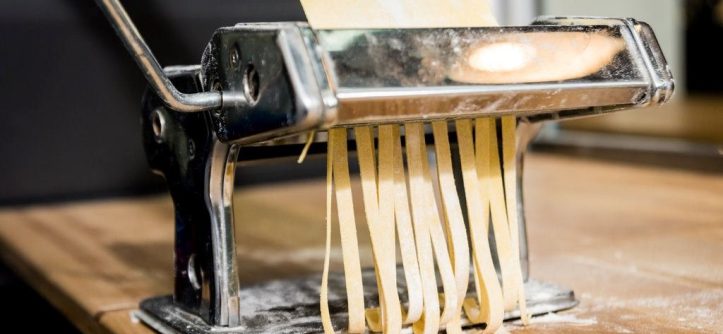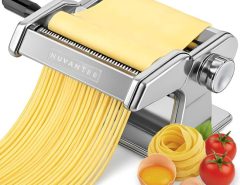Pasta makers have revolutionized home cooking across the globe. However, these beloved kitchen appliances often present challenges that frustrate even experienced cooks. From dough consistency issues to mechanical breakdowns, pasta maker problems occur in kitchens worldwide. This comprehensive guide addresses the most frequent pasta maker problems encountered by home chefs everywhere. Additionally, we’ll provide proven solutions that restore your machine’s performance. Whether you’re dealing with sticky dough or motor malfunctions, these expert fixes will help you create perfect pasta again.
Understanding Common Pasta Maker Machine Malfunctions Worldwide
Pasta maker malfunctions affect millions of home cooks globally. These issues range from simple maintenance oversights to complex mechanical failures. Therefore, understanding the root causes helps prevent future problems.
Motor-related issues represent the most serious pasta maker problems worldwide. Overheating occurs when machines run continuously without proper cooling periods. Additionally, electrical components wear down faster in humid climates. However, regular maintenance prevents most motor failures.

Dough Consistency Issues That Plague Home Pasta Making
Dough preparation creates the foundation for successful pasta making. Nevertheless, achieving perfect consistency challenges even experienced cooks. Humidity levels significantly impact dough texture across different geographical regions.
Sticky dough remains the most reported issue among pasta enthusiasts. This problem typically stems from incorrect flour-to-egg ratios or excessive moisture. Furthermore, different flour types absorb liquids differently, creating regional variations in dough behavior.
Conversely, overly dry dough crumbles during rolling and shaping. This issue commonly occurs in arid climates where moisture evaporates quickly. Additionally, using aged flour contributes to dryness problems.
Mechanical Problems With Pasta Maker Rollers and Cutters
Roller alignment issues frequently plague pasta maker owners worldwide. Misaligned rollers create uneven pasta thickness and can damage the machine permanently. Therefore, regular calibration checks prevent costly repairs.
Cutter blade problems manifest in several ways across different machine types. Dull blades tear dough instead of cutting cleanly, creating ragged pasta edges. Additionally, bent or damaged cutters produce irregular pasta shapes that affect cooking consistency.
Debris accumulation between rollers causes operational difficulties. Flour residue hardens over time, creating resistance that strains the motor. However, proper cleaning techniques prevent these accumulation issues.
Temperature and Climate Related Pasta Making Challenges
Environmental factors significantly impact pasta making success rates globally. High humidity areas experience different challenges compared to dry climates. Therefore, understanding these variations helps adapt techniques accordingly.
Hot climates cause dough to become sticky faster during preparation. The increased temperature accelerates moisture absorption, making handling difficult. Additionally, metal components expand in heat, affecting roller spacing and cutting precision.
Cold environments present opposite challenges for pasta enthusiasts. Dough becomes stiff and difficult to work with in low temperatures. Furthermore, motor lubricants thicken in cold conditions, increasing operational strain.
Cleaning and Maintenance Issues That Cause Long-Term Damage
Improper cleaning practices create most long-term pasta maker problems. Many users wash components with water, causing rust and corrosion. Therefore, understanding proper maintenance techniques extends machine lifespan significantly.
Flour residue buildup represents a persistent maintenance challenge worldwide. This accumulation attracts moisture and creates breeding grounds for bacteria. Additionally, hardened flour particles can damage delicate cutting mechanisms over time.
Oil and egg residue require specific cleaning approaches to prevent rancidity. These organic materials decompose rapidly in warm conditions, creating unpleasant odors. However, immediate cleaning after use prevents most residue-related issues.
Regional Variations in Pasta Maker Problem Frequency
Different geographical regions experience varying pasta maker problem frequencies. Coastal areas report higher corrosion rates due to salt air exposure. Additionally, industrial regions face more contamination-related issues from airborne particles.
European users frequently encounter different problems compared to North American consumers. This variation stems from different flour types, humidity levels, and machine designs. Therefore, solutions must account for these regional differences.
Asian markets report unique challenges related to rice-based pasta alternatives. These different ingredients require modified techniques and create specific machine stress patterns. Additionally, smaller kitchen spaces influence machine selection and usage patterns.
Professional Solutions for Complex Pasta Maker Repairs
Complex mechanical issues require professional intervention to prevent further damage. Motor replacement costs often exceed machine value, making repair decisions crucial. Therefore, understanding when to seek professional help saves money and frustration.
Authorized service centers provide specialized knowledge for specific machine brands. These professionals access original replacement parts and technical documentation. Additionally, warranty considerations often require professional service to maintain coverage.
DIY repair attempts frequently worsen existing problems without proper expertise. However, basic maintenance tasks remain within most users’ capabilities with proper guidance.
Preventive Measures to Avoid Future Pasta Maker Problems
Regular maintenance schedules prevent most pasta maker problems before they occur. Monthly cleaning and inspection routines identify potential issues early. Therefore, establishing consistent maintenance habits extends machine lifespan significantly.
Proper storage conditions protect machines from environmental damage between uses. Covering machines prevents dust accumulation and moisture exposure. Additionally, storing attachments separately prevents scratching and deformation.
Quality ingredient selection reduces machine stress and improves pasta results. Using appropriate flour types and fresh eggs minimizes dough-related problems. However, regional ingredient variations may require technique adjustments.
Cost-Effective Repair Solutions for Budget-Conscious Cooks
Many pasta maker problems have inexpensive solutions that avoid costly replacements. Simple adjustments often resolve alignment issues without professional intervention. Therefore, learning basic troubleshooting saves significant repair expenses.
Replacement parts availability varies significantly between machine brands and models. Generic alternatives sometimes work but may compromise performance or warranty coverage. Additionally, older machines may have discontinued parts requiring creative solutions.
Repair versus replacement decisions depend on machine age, problem severity, and replacement costs. However, quality machines often justify repair investments due to superior construction and performance.

Essential Tools and Techniques for Pasta Maker Troubleshooting
Basic troubleshooting requires minimal tools that most home cooks already possess. Screwdrivers, cleaning brushes, and lubricants handle most maintenance tasks effectively. Therefore, investing in proper tools prevents recurring problems.
Diagnostic techniques help identify problem root causes rather than treating symptoms. Visual inspections reveal wear patterns and damage that indicate underlying issues. Additionally, listening to operational sounds provides valuable troubleshooting information.
Documentation of problems and solutions creates valuable reference materials for future issues. Recording maintenance dates and procedures helps establish effective schedules. However, consistent application remains more important than perfect record-keeping.
When to Consider Pasta Maker Replacement Over Repair
Replacement decisions involve multiple factors beyond simple cost comparisons. Machine age, problem frequency, and available features influence these choices significantly. Therefore, evaluating total ownership costs provides better decision frameworks.
Newer machines often incorporate improved designs that address common historical problems. Energy efficiency improvements may offset replacement costs through reduced operational expenses. Additionally, enhanced safety features provide important user protection benefits.
Technology advancement cycles create opportunities for significant capability upgrades. Modern machines offer digital controls, multiple pasta types, and improved durability. However, simple mechanical machines often provide better long-term reliability than complex electronic versions.
Conclusion
Pasta maker problems affect home cooks worldwide, but most issues have straightforward solutions. Understanding common malfunctions helps prevent costly repairs and extends machine lifespan. Additionally, proper maintenance techniques eliminate many problems before they occur. Related Topics: Best Pasta Makers for Every Budget: From Classic to Automatic
Regional variations in climate and ingredients require adapted approaches for optimal results. However, consistent care and appropriate troubleshooting resolve most pasta maker problems effectively. Therefore, don’t let mechanical issues discourage your pasta-making passion.
Ready to solve your pasta maker problems? Share your experiences in the comments below or pass this guide along to fellow pasta enthusiasts who might benefit from these solutions.
Frequently Asked Questions
Why does my pasta dough keep sticking to the rollers?
Sticky dough usually results from too much moisture or insufficient flour dusting. Try adding small amounts of flour to your dough and dust the rollers lightly before use.
How often should I clean my pasta maker?
Clean your pasta maker after every use to prevent flour buildup and maintain optimal performance. Deep cleaning once monthly helps prevent long-term problems.
Can I wash pasta maker parts in the dishwasher?
Never put pasta maker components in the dishwasher. Hand cleaning with dry brushes and minimal moisture prevents rust and mechanical damage.
What causes uneven pasta thickness during rolling?
Uneven thickness typically indicates misaligned rollers or inconsistent dough preparation. Check roller alignment and ensure uniform dough consistency before rolling.
When should I replace my pasta maker instead of repairing it?
Consider replacement when repair costs exceed 60% of a new machine’s price, or when problems occur frequently despite proper maintenance.





Leave a Reply